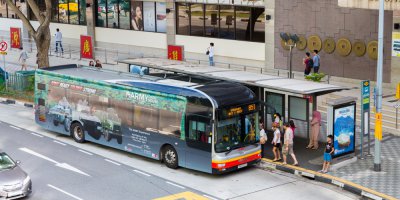
Despite Tesla’s claim to be offering fully autonomous (level 5) vehicles by Q2 of 2020, the industry expects delays across the globe. Source: AFP
What are the top obstacles for driverless car manufacturers?
The hype surrounding autonomous vehicles (AV) in the Asia Pacific (APAC) is a direct consequence of massive investments by big tech companies.
It’s why the self-driving market in the region is expected to achieve a compounded annual growth rate of 58.7 percent in the period between 2017 and 2024.
Despite Tesla’s claim to be offering fully autonomous (level 5) vehicles by Q2 of 2020, however, the industry expects delays across the globe.
APAC’s development of driverless cars is exciting to watch as the region hosts some of the world’s most dense cities. AV may be the answer to many mobility concerns that are on the rise.
So, it is definitely in the interest of automakers to create driverless cars that suit the APAC market.
However, they must first conquer these problem areas for AV to be full-fledged on the roads.
# 1 | Rain or shine
The weather across the APAC geography differs vastly — sometimes it’s rainy, sometimes hot, sometimes humid, and sometimes, all three at the same time. However, much of the AV trials are in warm-weather climates.
Singapore leads the APAC’s autonomous trials. It’s relatively sunny there, all year round.
For AV to be full-fledged on the roads, automakers must first overcome the impaired vision of driverless cars in different weather conditions.
# 2 | Regulatory support on infrastructure
With fragmented socioeconomic structures in APAC, the readiness of driverless cars varies too.
While some cities are already rolling out AV trials on public roads, others are still pending regulatory support for infrastructure.
Most of the AV market is private. However, the participation of lawmakers is pivotal to the market’s development.
In countries where the governments are proactive, significant improvements will happen in lesser times.
# 3 | Consumer acceptance
Truth is, one man’s dream can be another’s nightmare when it comes to commuting with no one behind the wheel.
Despite the obvious consumer benefits, not everyone is ready for driverless cars.
A KPMG study on change readiness showed that countries with greater consumer technology are more accepting of AV.
This means to say that an AV is merely a foreign concept if market penetration for consumer technology is low.
So, automakers need to ease the public into the idea before actually considering implementation.
AV will be the future of the way we commute as well as work.
The driverless component is essential in making the mobility of tomorrow’s smart cities happen.
While the reality of driverless cars isn’t far-fetched anymore, AV technology needs to conquer these areas for implementation and success.
READ MORE
- 3 Steps to Successfully Automate Copilot for Microsoft 365 Implementation
- Trustworthy AI – the Promise of Enterprise-Friendly Generative Machine Learning with Dell and NVIDIA
- Strategies for Democratizing GenAI
- The criticality of endpoint management in cybersecurity and operations
- Ethical AI: The renewed importance of safeguarding data and customer privacy in Generative AI applications






